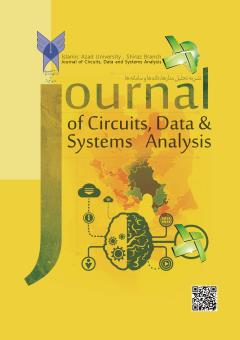Well-being Model of Power System with Photovoltaic Unit
Subject Areas : Power Engineering and Energy Management
Amir Ghaedi
1
*
![]() ,
Hamid Keyvani
2
,
Hamid Keyvani
2
![]() ,
Ayoub Alipour
3
,
Ayoub Alipour
3
1 - department of electrical engineering, Dariun Branch, Isalic Azad University, Dariun, Iran
2 - Department of electrical engineering, Kazeroun Branch, Islamic Azad University, Kazeroun, Iran
3 - Department of electrical engineering, Kazeroun Branch, Islamic Azad University, Kazeroun, Iran
Keywords: renewable energies, power system operation, spinning reserve, well-being model, photovoltaic power plant,
Abstract :
Photovoltaic units convert solar energy into electricity. The power of these plants is dependent on the amount of solar radiation, and because the solar radiation is variable, the production power also changes over time, and its effect on various issues, including the operation of the power system, should be investigated. In the operation of the power system, to maintain the balance of production and consumption, some reserve is considered. In the past, the amount of reserve was considered as a percentage of load or power, and in probabilistic methods it is calculated based on risk. In the well-being model of power system, both the probabilistic model and the empirical rules are used to determine the indices. This model is based on risk and the amount of reserve is higher than the capacity of the largest unit. In this paper, the well-being model of the power system with the presence of photovoltaic plants is obtained. For this purpose, the reliability model of the photovoltaic plant is obtained by considering the failure of the components and changes in solar radiation. The simulation results are also presented to investigate the impact of photovoltaic plants on well-being model indices
[1] Dambhare, Mugdha V., Bhavana Butey, and S. V. Moharil. "Solar photovoltaic technology: A review of different types of solar cells and its future trends." Journal of Physics: Conference Series. Vol. 1913. No. 1. IOP Publishing, 2021.
[2] Al-Ezzi, Athil S., and Mohamed Nainar M. Ansari. "Photovoltaic Solar Cells: A Review." Applied System Innovation 5.4 (2022): 67.
[3] Fara, Laurentiu, and Dan Craciunescu. "Reliability analysis of photovoltaic systems for specific applications." Reliability and Ecological Aspects of Photovoltaic Modules; Gok, A., Ed (2020): 79-92.
[4] Atsu, Divine, et al. "Analysis of long-term performance and reliability of PV modules under tropical climatic conditions in sub-Saharan." Renewable Energy 162 (2020): 285-295.
[5] Shahidi Rad, N., M. Niroomand, and R. Hooshmand. "Failure Rate Calculation and Reliability Assessment of a PV System based on Monte-Carlo Simulation Considering Environmental Conditions." TABRIZ JOURNAL OF ELECTRICAL ENGINEERING 48.3 (2018): 1215-1225
[6] Ghaedi, Amir, and Hamed Gorginpour. "Spinning reserve scheduling in power systems containing wind and solar generations." Electrical Engineering (2021): 1-20.
[7] Nargeszar, Ayoub, et al. "Reliability evaluation of the renewable energy‐based microgrids considering resource variation." IET Renewable Power Generation 17.3 (2023): 507-527.
[8] Ghaedi, A., et al. "Incorporating Large Photovoltaic Farms in Power Generation System Adequacy Assessment." Scientia Iranica 21.3 (2014): 924-934.
[9] Bazyari, Shahriar. "A study on the effects of solar tracking systems on the performance of photovoltaic power plants." Journal of Power and Energy Engineering 2.04 (2014): 718.
[10] Li, Zhongwen, et al. "Adaptive power point tracking control of PV system for primary frequency regulation of AC microgrid with high PV integration." IEEE Transactions on Power Systems 36.4 (2021): 3129-3141.
[11] Wang, Jian, et al. "Design and Performance Analysis of PV-SMES-Based Microgrid Integrated with Power Fluctuation Suppression and Active Filtering Control." IEEE Transactions on Applied Superconductivity 31.8 (2021): 1-5.
[12] Angadi, Sachin, et al. "Comprehensive review on solar, wind and hybrid wind-PV water pumping systems-an electrical engineering perspective." CPSS Transactions on Power Electronics and Applications 6.1 (2021): 1-19.

